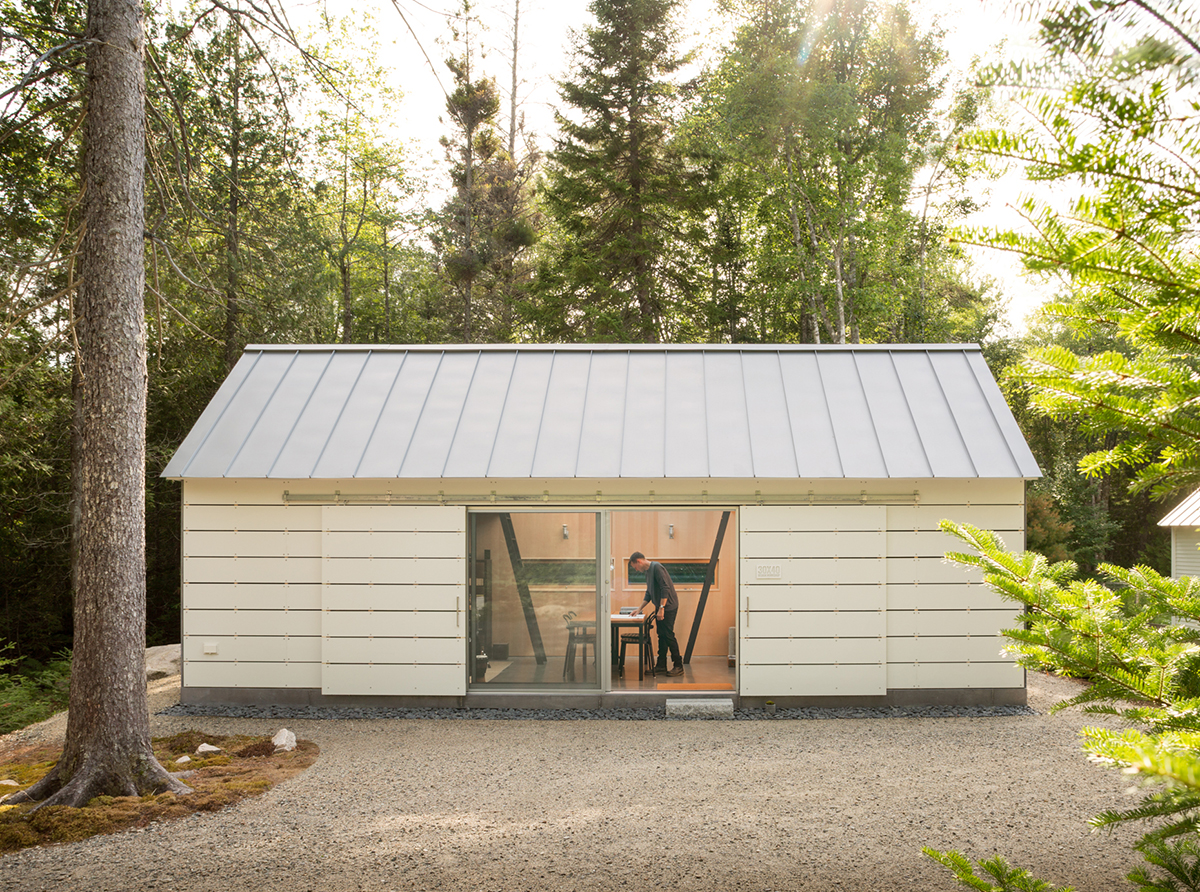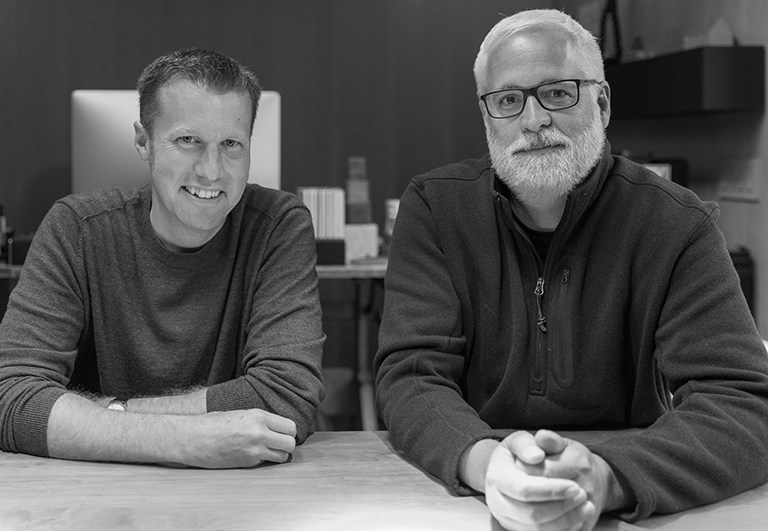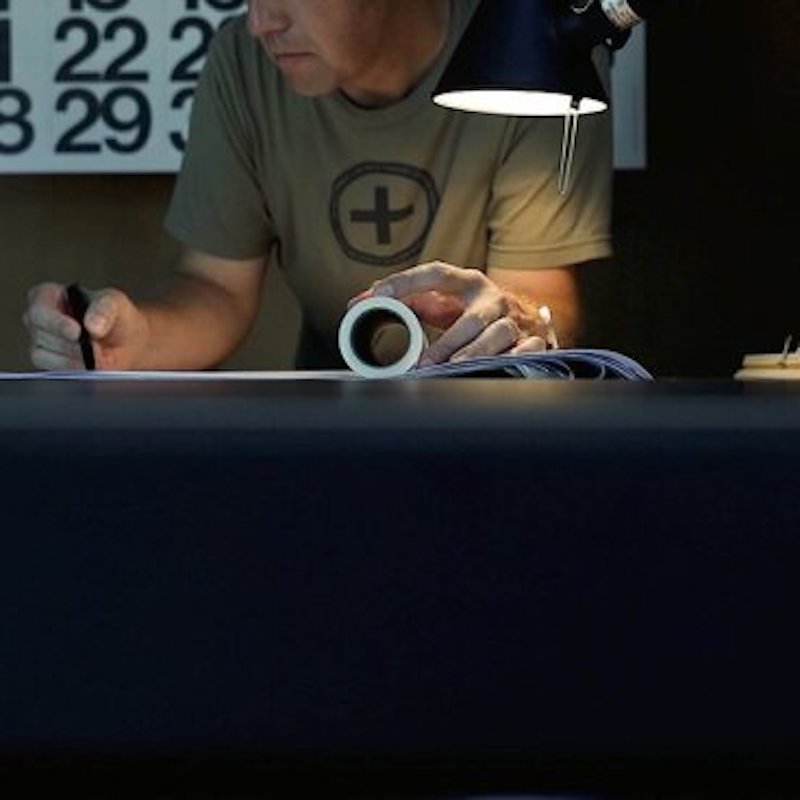In today’s episode, we are talking about starting your own design firm--something that I think every architect walking the planet has thought about at various times throughout their career. I know I have.
When Andrew and I decided to make this a topic, I knew exactly who I wanted to join us for this conversation. Joining us from the Long Studio, located off the coast of Maine on Mt. Desert Island, is architect, designer, filmmaker, my friend, and fellow Norwegian, Eric Reinholdt from the 30×40 Design Workshop.

The image above is a look into the Long Studio where Eric practices architecture and where I visited him in 2018. Immediately below is the first video I ever watched that Eric created and if I am being brutally honest, I had a visceral response to watching it--mostly because it spoke to me at a very base level. The story that Eric shares is so similar to what most architects experience, but there is a light at the end of the tunnel in this video, as well that talks about how it’s possible to get what you want and I recommend watching it if you haven’t seen it already.
Begin at the Beginning jump to 3:00
Eric shares with us his story about how he evolved through a traditional practice, became disillusioned over the years with the type of work, that he was not being involved in the decision-making process, excluded from the accolades that come with doing quality work, and of course, the pay was not commensurate with how he perceived his value to the firm.
Making Ends Meet – The Finances jump to 8:13
The ability to pick and chose your projects and clients suggests that you are doing well enough to be choosy with your options as opposed to the thinking that you will take everything that comes your way because you need to keep the lights on. This is one of those moments when you decide what sort of firm you want to have – one that is focused on building and growth, or one that says “if I only get one project that I can be proud of and want to put my name on then that’s what I will do.”
"The services side of the business can only scale to a certain amount – there are only so many hours you can work in a day, and there’s an upper end to the billing rate that I can charge in this area."
Sacrifices to other aspects of your life jump to 20:45
For some, avoiding these sacrifices is the reason you go into private practice but many times, there’s simply no way to avoid it. To help organize how he breaks his day up to maximize his productivity as well and focus in on those moments of pure creativity, Eric employs the Maker versus Manager’s Schedule – a concept pulled directly from Paul Graham, the founder of Y Combinator (you can read the short piece here).
Conceptually it breaks down into two spheres – a maker’s sphere and a manager’s sphere and most people spend their day moving between these two spheres (i.e. you’re designing elevations but then a contractor calls with a technical question) and there is a switching cost when you have to change between these two modes. Paul Graham advocates that you block your day off into two distinct parts where the making part is confined to this block and the managing role is confined to the other block and as a result, there is only one switch between the two per day.
The use of this schedule would be difficult for someone in a large firm where a person’s schedule is rarely dictated by a single individual but Eric’s discusses how he receives a fair amount of criticism for advocating this particular Maker/Manager schedule as unrealistic and while I can appreciate the difficulty of executing it when you are part of a much larger team and don’t have the ability to dictate the schedules of others, but, I have seen how Eric implements this philosophy firsthand and it works rather spectacularly.
How many hours do you work to pull this off? jump to 31:42
The hours are not for the squeamish and the hours put in are significant. For Eric, he starts his day very early – around 4:30 am – and he continues to work until 6-6:30 pm. These hours reflect his passion for the “making” portion of his schedule, which is how he begins his day. When he was working in his house, he had hard lines drawn between when he has work time versus family time. Once he built the long studio and moved out of the house, he found that his schedule increased – mostly because he enjoyed being there so much.
Do you have a workload you will not exceed? jump to 35:17
For some practicing architects, especially those in private practice, they understand how many hours they want to work in a week and that translates into a certain number of projects – whether they are in design or in construction. For others, they have financial goals that they set, and the time they spend working is based upon the fees associated with the projects they currently have in place. For Eric, he maintains one project in design and one in construction and the rest go on a waiting list.
"Less than 15% of new design businesses survive their first year."
Alternative revenue streams to supplement your cash flow and your time. jump to 39:00
One of the ways that Eric has combated the cash flow and the number of projects that he takes on, is the passive income strategy that he has in place … only 20% of his yearly revenue comes from his architectural practice. The goal was to take the product that is created as a result of practicing architecture is simply repackage or repurposed into the content that he uses for his videos, plan sets, training seminars, etc.
There are a ton of similarities between Life of an Architect and mindset Eric advocates in the sharing of information – it’s probably one of the reasons why he and I can slip into a conversation so easily. For both of us, the content that was created was done as part of our creative interests and a desire to simply show people what we were doing and how we were doing it.
The original goal was simply to put information out into the world and see where it goes and what happens next. As his business evolved, fueled in some part by looking for some financial stability (since he lives on a remote island off the coast of Maine) he consciously looked to see how he could take the product he was already creating, and use it to benefit others while monetizing its value. This decision, not to mention the amount of work he has put into it, is what is now giving him the flexibility he was seeking in the beginning.

The Billing jump to 48:13
We talk about the frequency and the manner in which invoices are generated -which as it turns out is pretty much based on the percentage of the total construction cost. We also discuss the idea of straight-up hourly billing – which is a very defensive way in which to run a firm. I am of the opinion that it’s actually more beneficial for clients to go with straight-up hourly billing but this of course can vary based on the particular needs of the client.
I can tell you that I billed hourly for 6 years and during that time, I didn’t receive one complaint EVER from a client. During this same period, I probably would have professionally fared better if I had simply charged a percentage of the construction cost and then billed against the progress made – this method rewards you for working efficiently and effectively – but you would be punished for providing a high level of service which is really the way I prefer to work.

We are taking on another one of Andrew’s hypothetical questions … but this one gives me the opportunity to share the story behind receiving an awkward massage on my last trip to China. jump to 64:04
"If you could have free, unlimited service for 5 years from an extremely qualified chef, chauffeur, or masseuse, which would you choose?"
Is this an easy answer for everyone? Eric and I are definitely on the same wavelength and Andrew throws us a curveball with his selection … especially since we all know there is really only one correct answer to this question.
I read an article while I was researching for today’s show that said less than 15% of new businesses survive their first year and it got me thinking about those first steps that a person could make when deciding to go out on their own.
• Depending on your current station in life, particularly thinking about young people starting out, I think it starts with believing in yourself and in your abilities. That’s a far better way to begin a new design firm rather than doing it as a result of not having other options.
• Don’t rush this process – be prepared and think it through, have a plan in place and be prepared (consider working for others for a while before going out on your own)
• Finally, you need to do a gut check and evaluate your financial situation to help determine your ability to weather the financial storm should things not go as planned in the beginning.
Pretty straightforward information but admittedly, harder in execution than in planning. Plan, prepare, and believe.
Cheers,

Life of an Architect would like to thank Sherwin-Williams Coil Coating for their gracious support of this episode as well as our media partners, Building Design+Construction. To learn more about the products and services offered by Sherwin Williams as well as requesting your own architectural metal color card, please visit www.coil.sherwin.com/architectslife.
P.S. – I finally connected with Eric up in his Long Studio back in the summer of 2018 and spent a pleasant morning talking architecture and life in general. I have a lot of respect for Eric and how he has managed his life and practice. I would never suggest that things are easy but he has certainly accomplished something that many architects dream of doing themselves.

As of this recording, Eric’s latest video is on the recent renovation of his studio, a beautifully shot piece that you can find here.






